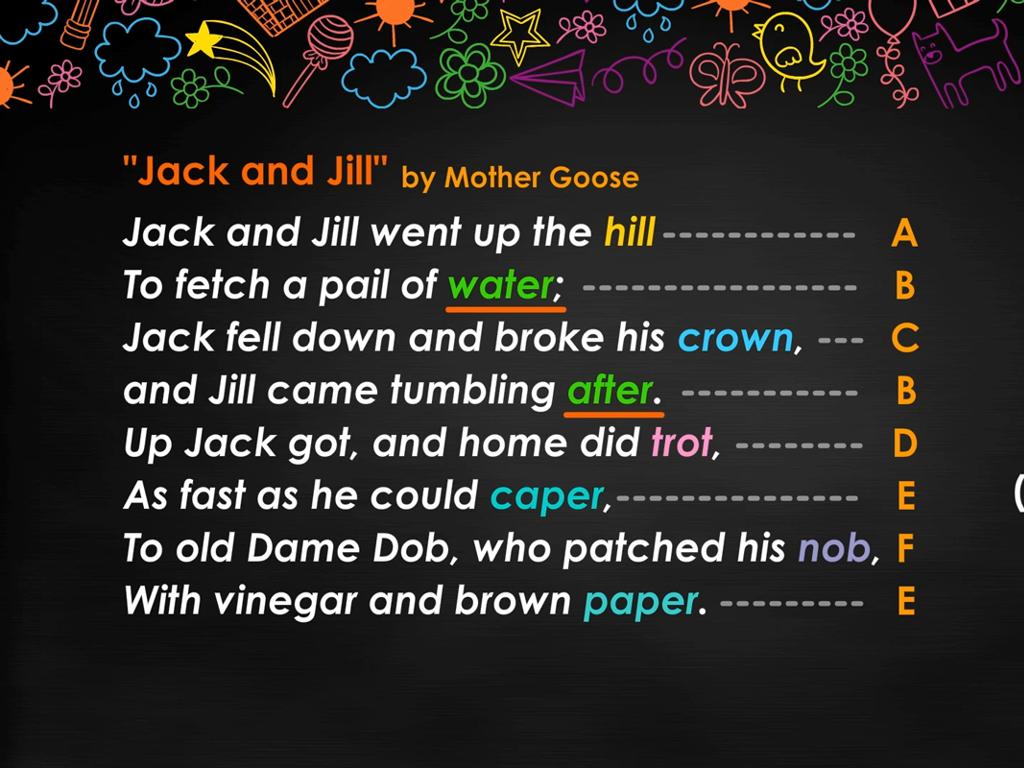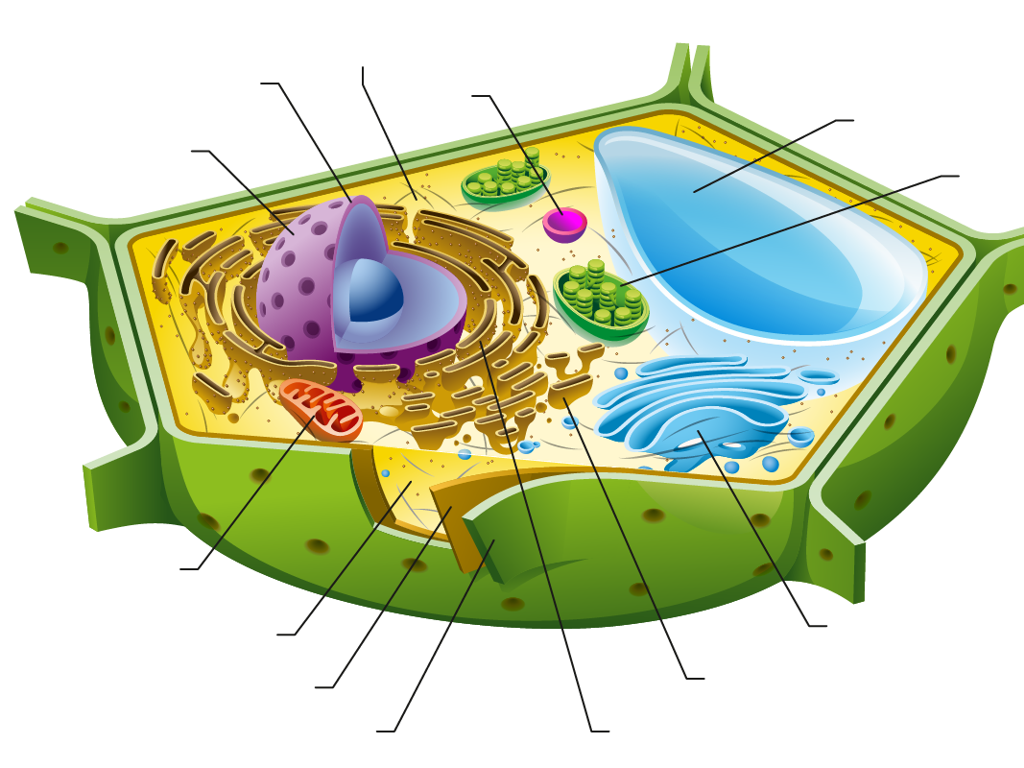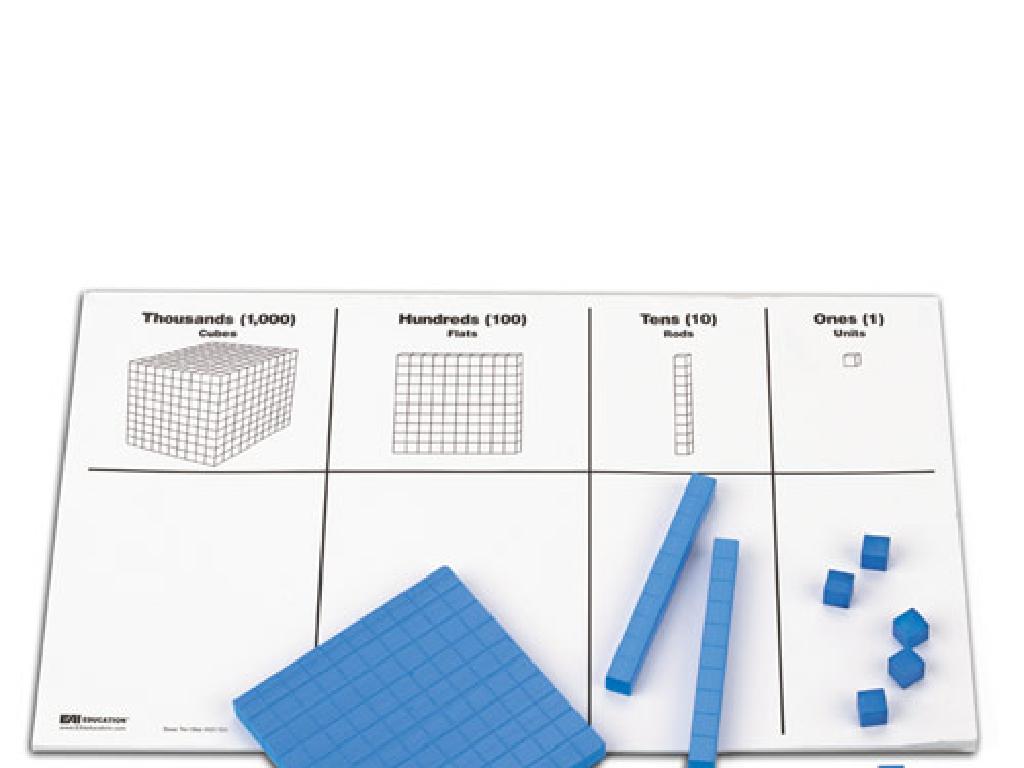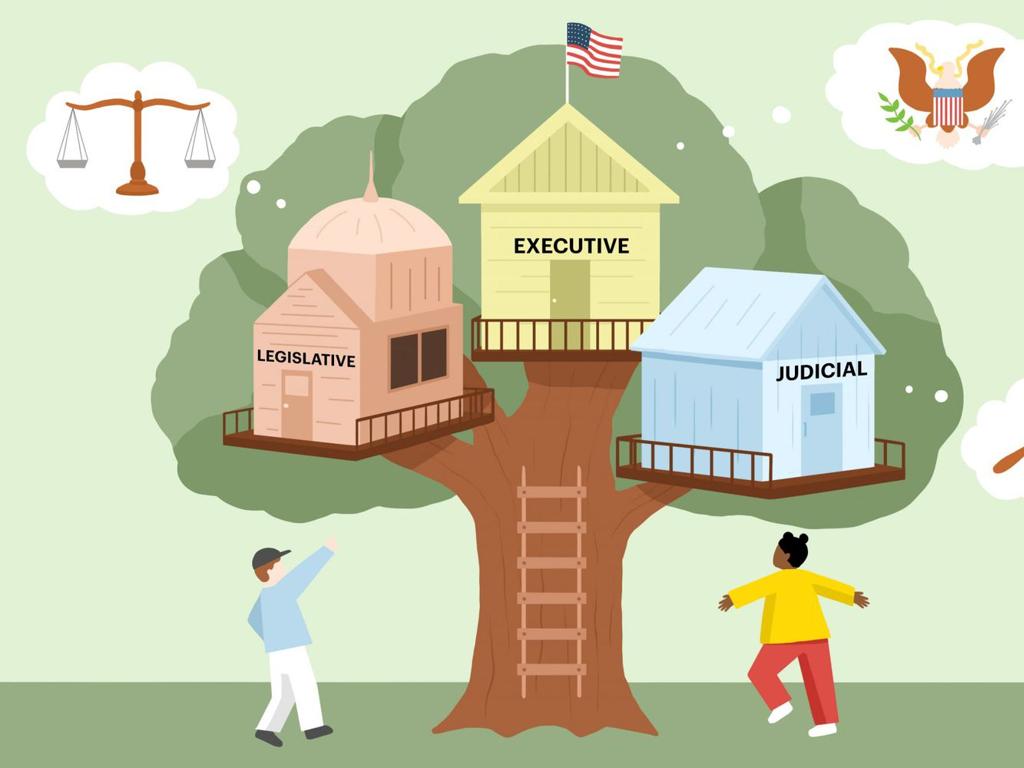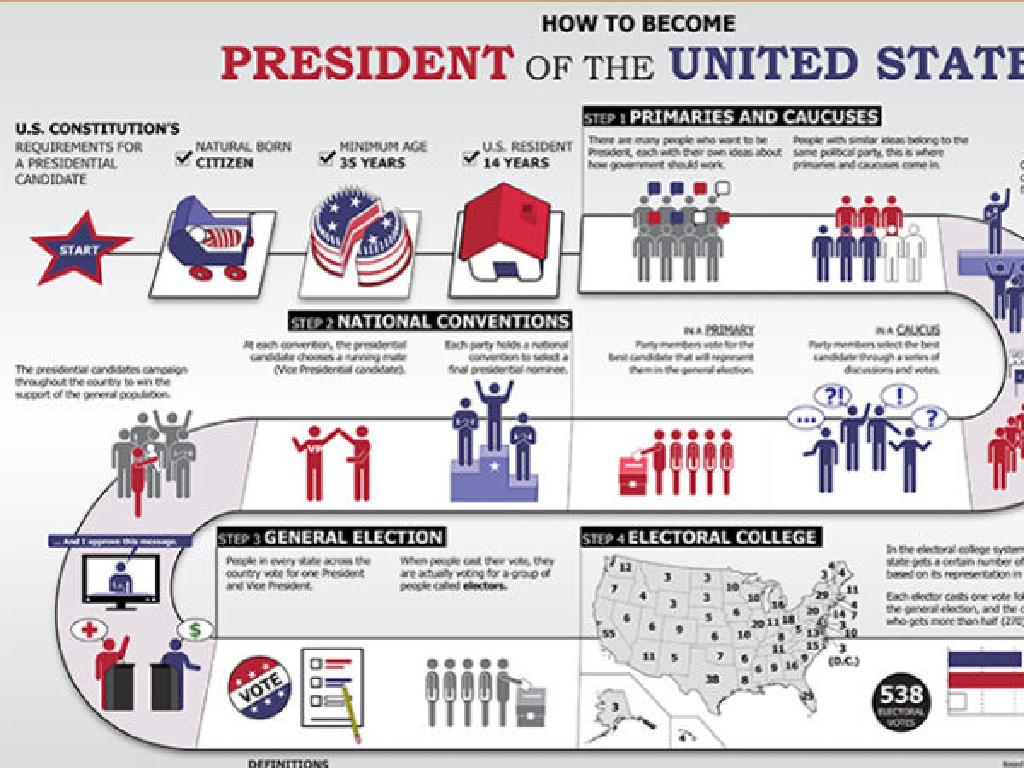Select The Words That Don'T Belong
Subject: Language arts
Grade: Third grade
Topic: Categories
Please LOG IN to download the presentation. Access is available to registered users only.
View More Content
Introduction to Categories
– Understanding categories
– Groups of things with similar traits
– Significance of categories
– Helps organize thoughts & understand new words
– Examples of categories
– Fruits, Animals, Colors
– Practice finding categories
– We’ll sort different items into their groups
|
This slide introduces the concept of categories to third-grade students, emphasizing the importance of grouping items based on shared characteristics. Explain that categories help us organize our thoughts and make sense of the world around us. They are also crucial for building vocabulary and comprehension skills. Provide simple, relatable examples such as fruits, animals, and colors to illustrate the idea of categories. Engage the students with an interactive activity where they classify various items into the correct categories, reinforcing their understanding of the concept.
Understanding Categories
– Learn to group items
– Discuss category characteristics
– What makes items in a group similar?
– Activity: Group objects
– Use common traits to group
– Find the odd one out
– Which item doesn’t fit? Why?
|
This slide introduces the concept of categorization, a key skill in language arts that helps with organizing information. Start by explaining how to group items based on common characteristics. Discuss with students what features make items belong to the same category. For the activity, provide a set of objects or words and ask students to group them. Then, challenge them to identify items that don’t belong in a particular group and explain their reasoning. This exercise will enhance their analytical skills and understanding of categories. Encourage participation and provide guidance as needed. Prepare examples like fruits vs. vegetables, or modes of transportation, and ensure the activity is interactive and engaging.
Finding the Odd Word Out
– Learn to spot the odd word
– Find the word that doesn’t match the others in a list
– Understand why it doesn’t fit
– Words may not fit because of their meaning, use, or category
– Activity: Thumbs up or down
During the activity, give a thumbs up if the word fits the category, or a thumbs down if it doesn’t
– Discuss our choices together
After the activity, we’ll talk about why we made our choices
|
This slide introduces the concept of categorization and the activity designed to help students practice identifying words that do not belong in a particular group. The goal is to enhance their critical thinking and reasoning skills by understanding categories and the attributes that define them. During the activity, students will actively participate by using thumbs up or down to indicate whether a word fits a category, promoting engagement and peer learning. After the activity, facilitate a discussion to allow students to explain their reasoning, reinforcing their understanding and ability to articulate their thought process.
Practice with Categories: Finding the Odd One Out
– Learn to categorize words
– Group activity: Spot the odd word out
– Work together to find which word doesn’t belong in a list
– Discuss reasons for words not fitting
– Share thoughts on why certain words don’t match the category
– Enhance vocabulary skills
|
This slide is designed for a group activity where students will practice categorizing words and identifying words that do not belong in a particular category. The activity encourages collaboration and discussion among students, enhancing their vocabulary and reasoning skills. As a teacher, facilitate the activity by providing word lists and guide the discussion to ensure students understand why some words don’t fit with the others. Offer examples such as ‘apple, banana, carrot, shoe’ where ‘shoe’ doesn’t belong to the ‘fruits and vegetables’ category. Encourage students to explain their reasoning for a deeper understanding of categorization.
Playing with Categories: Quick Sorting!
– Engage in a sorting race game
– Sort words into categories as fast as you can
– Find the odd word out quickly
– Look for words that don’t fit with the others
– Learn why quick thinking matters
– Quick thinking can help us make decisions faster
– Get ready for a fun challenge
|
This slide introduces a fun and interactive game where students will race to categorize words and identify the ones that don’t belong. The activity is designed to enhance their ability to think quickly and make decisions, which is a valuable skill in many areas of life. Encourage students to trust their instincts and discuss strategies for identifying outliers in categories. Prepare a list of categories and words for the game, ensuring a mix of easy and challenging examples. Consider timing the activity and rewarding quick and accurate sorting to foster a friendly competitive environment.
Class Activity: Category Detective
– Become a category detective!
– Circle the odd word in each list
– Find words that don’t fit the category
– Discuss reasons for your choice
– Is it not a fruit? Not a color? Think about why
– Share findings with the class
|
This activity is designed to enhance the students’ critical thinking and categorization skills. Provide the students with a list of words grouped by category with one word that does not belong. Instruct them to identify and circle the word that is out of place. Encourage them to think about why the word doesn’t fit and be ready to explain their reasoning. After completing the task, students will share their findings with the class, fostering a collaborative learning environment. Possible lists could include a mix of animals and a vehicle, types of clothing and a food item, or a list of colors with one number included. This will help them understand the concept of categories and improve their vocabulary.
Conclusion & Reflection: Categories
– Recap on learning categories
– We learned how to group words based on similarities.
– Importance of word sorting
– Sorting words helps us understand and organize information better.
– Discuss today’s activity
– Share what you enjoyed or found challenging.
– Reflect on our learning
– Think about how this skill can help us in reading and writing.
|
As we wrap up today’s lesson, let’s revisit the concept of categories and why they are useful. Understanding how to categorize words helps with vocabulary development and comprehension. Encourage the students to discuss how today’s activities helped them understand the concept. Ask them which words were tricky to categorize and why. This reflection will help them internalize the lesson and see the practical application of sorting words in their daily learning. It’s also an opportunity to assess their grasp of the material and to reinforce the day’s learning objectives.

